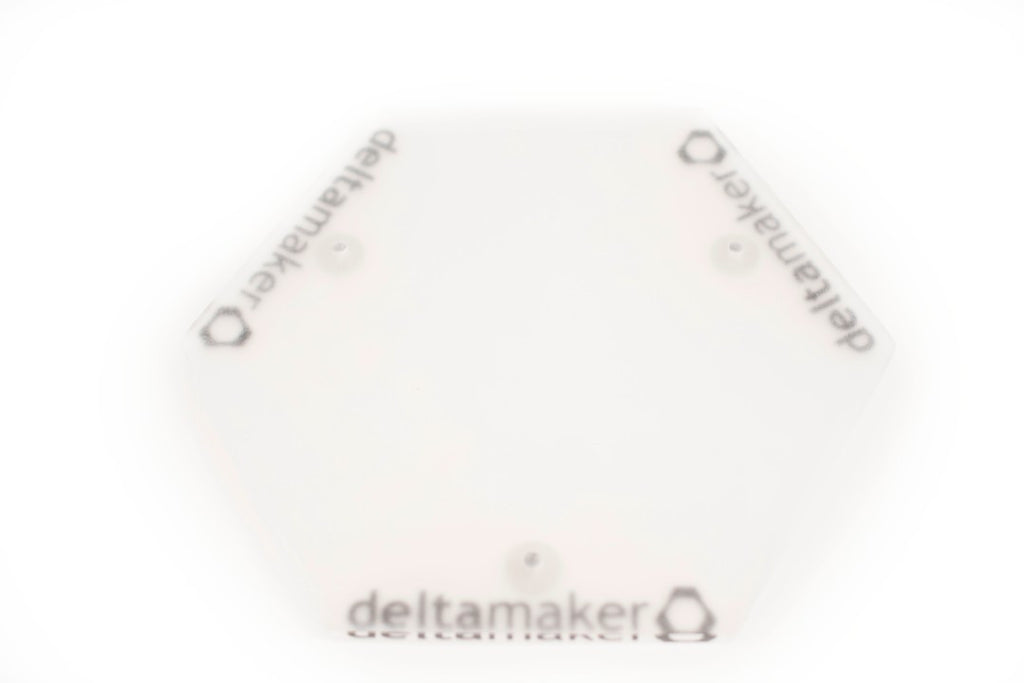Best Height Sensor for Opaque Acrylic?
-
I'm upgrading my DeltaMaker to a Duet Wifi. Also building a new E3D Lite6-based hotend for it. The one thing I haven't completely settled on is the height sensor. I have a design that I want to try that actually uses the nozzle (when the nozzle contacts the bed, it lifts slightly, enough to open a switch at the far end of the lever), so I wanted to verify that a simple low->high or high->low transition will work (I'm sure it will).
But if that solution doesn't work (as in I keep forgetting to cool the hot end before executing a calibraton), what would you guys recommend I use? The bed is unheated, opaque acrylic:

Mine's seen enough action that it now looks more like the surface of the moon (flat but not particularly smooth, discolored in spots, hairspray residue, small craters I've been meaning to fill in, etc.). It still works pretty well, though. Is DC42's differential IR my best bet if the pivot head doesn't work out? -
Running calibrations cold is asking for trouble - if there's a blob of plastic on the end, you want it liquid and squashy. I had trouble with the non-contact IR sensor at one point because there was a big enough blob of cold plastic that it hit the bed before the IR sensor triggered.
Some folks get decent results with FSRs under the bed, but you need good designs for the mounts, and you probably need a little ATTiny-based daughterboard to turn it into a digital signal cleanly. At least one fancy machined-metal delta kit uses the effector-spring method you describe and seems to get credible results.
There's a certain appeal to a sensor that, like the inductive sensor on the new Prusa i3 Mk2, could also give you horizontal position information, but I don't know of any firmware that can take advantage of this to improve a delta's calibration.
-
Appreciate the feedback. But if I were to run the pivot design at temp, I'm pretty sure I'd be peppering my acrylic bed with little divots at every calibration point, deepening over time.
Just have to make sure that my nozzle is blob-free when I calibrate, which I don't expect to have to do that often - my current DeltaMaker config can run for weeks between leveling or even nozzle height checks.
-
The only acrylic I have to test the IR sensor against is black acrylic, and the sensor works well with that. The usual issue for the IR sensor with transparent bed surfaces is that the reflection from the back surface interferes with the reflection from the top surface, and this causes the trigger height to depend on the relative strengths of the two reflections. Your acrylic may be opaque enough to avoid that.